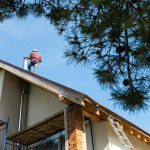Today, we will delve into a step-by-step guide on how to accomplish one of the vital maintenance tasks on your Kawasaki Ninja H2: replacing the front fork seals. With regular use, these parts inevitably wear out and require replacement. The process may seem intimidating, especially to novices. However, armed with the right information, tools, and a bit of patience, you can carry out this operation in your garage rather than paying for professional service.
Understanding the Fork System and Its Parts
The front fork of your Kawasaki Ninja H2 is a critical part of the suspension system, designed to isolate you from road shocks and ensure the front tire maintains constant contact with the ground. The fork contains a pair of shock absorbers filled with oil, and the seals keep this oil from leaking.
This might interest you : What are the critical steps to ensure correct installation of a sidecar on a Ural Gear Up?
The seals also prevent dirt and other contaminants from entering the fork. Over time, these seals can wear out or get damaged, leading to an oil leak. This can compromise the performance of your bike, especially the front brake system. It’s important to check these seals regularly and replace them as soon as you notice any signs of wear or damage.
The main parts of the fork system include the fork tubes, the seals, the oil, the shock absorber, and the valve. In some cases, the valve may need to be adjusted or replaced. For instance, when the stock valve no longer performs optimally, you might consider upgrading to a high-performance KYB valve.
In parallel : How often should I inspect the electrical wiring harness on a Harley-Davidson Electra Glide for wear?
Procuring the Necessary Parts and Manual
Firstly, take stock of the parts you need. This includes the forks seals, and potentially, the oil. Sometimes, it is also necessary to replace the dust seals along with the fork seals. A forum dedicated to Kawasaki Ninja H2 owners can be a great resource to verify the parts you need and their corresponding part numbers.
Always ensure you order genuine Kawasaki parts or high-quality aftermarket equivalents. Using substandard parts could lead to poor performance and potential damage to your bike.
Having an official Kawasaki Ninja H2 service manual is invaluable for this task. It provides detailed instructions, diagrams, and specifications, allowing for an easier and more accurate repair process.
Removing the Front Fork
Before you begin the process of replacing the seals, you need to remove the front fork from the bike. This procedure requires some technical skills, but with the right guidance and patience, it’s achievable.
Start by freeing the brake system from the front fork. Then, loosen the top cap while the fork is still mounted on the bike. It’s a lot easier to do it this way than when the fork is off the bike. Next, remove the fork. Be careful not to damage any parts during this process.
Replacing the Fork Seals
Once you’ve removed the front fork, you can proceed to replace the fork seals. Start by draining the fork oil. Then, remove the dust seal and circlip. With these parts removed, you can slide the old fork seal off.
Before you install the new seal, clean the inner and outer tubes of the fork thoroughly. Any dirt or residue can damage the new seal. Once clean, slide the new seal onto the fork tube. It’s a good idea to use a seal driver for this task to ensure the seal is seated correctly.
Next, replace the circlip and dust seal. After this, you can refill the fork with oil. Consult your manual for the correct oil volume and type. Once filled, replace the top cap and the fork is ready to be reinstalled on the bike.
Reinstalling the Front Fork and Final Checks
Reinstall the front fork by reversing the removal steps. Ensure you torque all fasteners to the correct specifications as per your service manual. Once the fork is back on the bike, double-check everything to make sure it’s installed correctly.
Before you hit the road, test the front suspension to make sure it’s working properly. Take a slow ride at first and pay attention to the front fork’s performance. If all is well, you can gradually increase your speed and start enjoying your ride again.
In conclusion, replacing the front fork seals on your Kawasaki Ninja H2 is not as daunting as it might seem. With the right parts, tools, and some patience, you can do it yourself and save on service costs. Remember to always consult your service manual and take your time to ensure a successful repair.
Do’s and Don’ts of Replacing Fork Seals
When replacing the fork seals on your Kawasaki Ninja H2, there are certain precautions and steps that you need to adhere to for a successful repair. Here are some do’s and don’ts you should keep in mind:
Do keep your workspace clean and organized. This helps avoid losing any parts or getting unnecessary dirt and debris in your fork system.
Don’t rush the process. You need to be patient and careful while performing this task. Rushing could lead to mistakes and damage to your bike.
Do use quality parts. It’s crucial that you use genuine Kawasaki parts or high-quality aftermarket equivalents. These parts ensure the longevity and performance of your bike.
Don’t forget to check the other parts of your fork system. While replacing the seals, take the opportunity to inspect the other parts of the fork system for any signs of wear or damage.
Do test ride your bike after the repair. This helps to confirm that the replacement was successful and the bike is safe to ride.
Frequently Asked Questions (FAQs)
Q: How often should I replace the fork seals on my Kawasaki Ninja H2?
A: The frequency of replacing the fork seals depends on your bike’s usage and the conditions it is exposed to. Typically, fork seals should be replaced every two years. However, if you ride your bike aggressively or in harsh conditions, you might need to replace them sooner.
Q: Can I use any type of oil to refill the fork?
A: No, it’s crucial to use the recommended type of oil for your bike. You can find this information in your service manual.
Q: What are the signs that my fork seals need replacing?
A: Signs that your fork seals need replacing include oil leakage, reduced suspension performance, and dirt accumulation around the seals.
Conclusion
Replacing the fork seals on your Kawasaki Ninja H2 is an essential part of maintaining your bike’s performance and safety. It may seem challenging at first, but with patience, careful attention, and the right tools, you can accomplish this task on your own. Remember to keep your workspace clean, use quality parts, and follow the proper procedures as specified in your service manual. Don’t forget to inspect the other parts of your fork system and to test your bike after the replacement process. By following these guidelines, you’ll not only save on service costs but also prolong your bike’s lifespan.
















